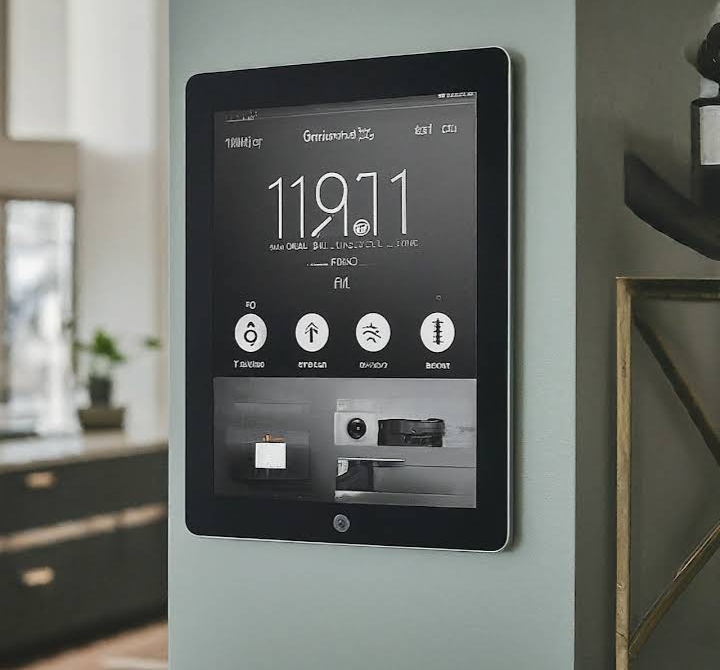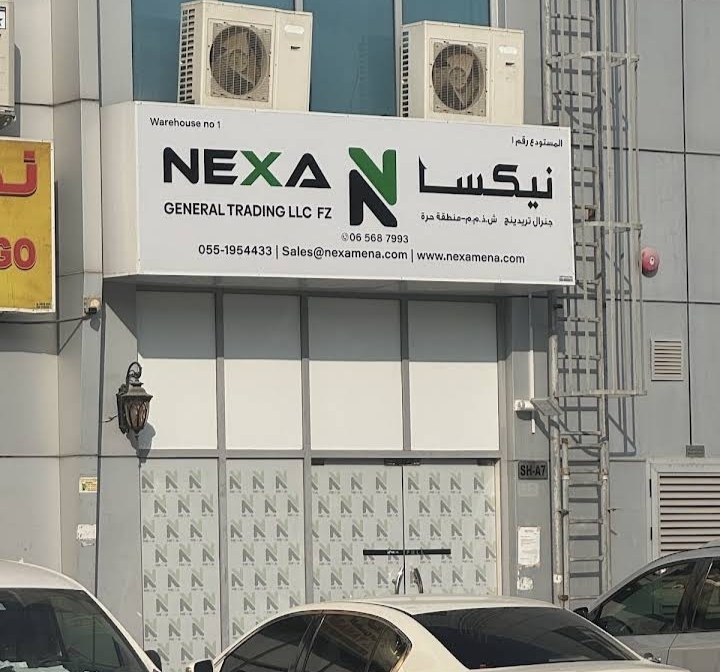Nexa Automation LLC
Nayeli Building, 1st Street, Near Najmat Al Tamam Land Cargo, Sharjah Industrial Area 12, Sharjah, 32223
Since : 2023
Nayeli Building, 1st Street, Near Najmat Al Tamam Land Cargo, Sharjah Industrial Area 12, Sharjah, 32223
Since : 2023
Variable Frequency Drives (VFDs) are vital components in modern industries, enabling efficient control of electric motors by adjusting their speed and torque. VFD programming refers to configuring these drives with specific parameters that align with industrial processes, equipment requirements, and energy-saving goals. In Sharjah, a hub for industrial and commercial development, VFD programming services are increasingly in demand. Businesses across manufacturing, HVAC, water treatment, oil & gas, and logistics rely on expert technicians and engineers to ensure smooth operations.
Customers looking for VFD programming in Sharjah expect not just technical accuracy but also customized solutions, after-sales support, and compliance with safety standards. Below, we will explore the significance of VFD programming, its availability in Sharjah, and the expectations customers typically have from service providers in this field.
1. Nexa Automation LLC
Nayeli Building, 1st Street,
Near Najmat Al Tamam Land Cargo,
Sharjah Industrial Area 12,
Sharjah, 32223
2. Al Fanar
Electricals
King Faisal Street,
Near Sharjah City Center,
Sharjah, 61140
3. Control
Tech Solutions
Al Khan Street,
Opposite Safeer Mall,
Sharjah, 62331
4. Powerline
Automation Services
Sharjah Industrial Area 3,
Beside Al Madina Supermarket,
Sharjah, 32245
5. Gulf
Electromechanical Works
Rolla Street,
Near Al Zahra Hospital,
Sharjah, 61412
6. Sharjah
Drives & Controls
Industrial Area 10,
Close to National Paints,
Sharjah, 61126
7. Dynamic
Automation Systems
Al Majaz 2,
Near Buhaira Corniche,
Sharjah, 62211
8. Smart
Power Controls
Sharjah Industrial Area 15,
Behind Al Shamsi Building,
Sharjah, 61132
9. Reliable
Engineering Services
King Abdul Aziz Street,
Close to Sharjah Gold Center,
Sharjah, 61144
10.
Advanced Techno Solutions
Al Taawun Street,
Near Sharjah Expo Center,
Sharjah, 61128
VFD programming refers to the process of configuring and setting parameters in a Variable Frequency Drive (VFD) to control the speed, torque, and performance of electric motors. A VFD is an electronic device that adjusts the frequency and voltage supplied to a motor, making it highly efficient for controlling industrial machinery, pumps, fans, and conveyors. Proper programming ensures energy savings, reduced wear and tear on equipment, and improved process control. VFDs typically come with user-friendly keypads and digital displays that allow operators to input required parameters according to the application’s needs.
VFD programming is widely applied in industrial automation, HVAC systems, manufacturing units, and water treatment plants. By adjusting motor speed to match load requirements, companies can save significant amounts of energy. For example, in HVAC systems, VFDs help regulate airflow by controlling fan motors, reducing electricity consumption. In manufacturing, VFDs allow precision in conveyor systems and ensure consistent production quality. Programming also enables features like soft starting and stopping, which reduces mechanical stress on motors and extends their lifespan.
Variable Frequency Drives (VFDs) are electronic devices used to control the speed and torque of electric motors by varying the input frequency and voltage. Through proper programming, VFDs can be customized to match specific operational needs, making them highly versatile in industrial, commercial, and residential applications.
VFD programming allows precise speed control to match demand.
Helps in reducing energy consumption and avoiding unnecessary wear.
Used in HVAC systems, water treatment plants, and irrigation systems.
Ensures smooth starting, stopping, and speed adjustment of conveyors.
Prevents product damage and improves overall process efficiency.
VFDs regulate compressor motor speed according to air or gas demand.
Reduces power wastage and extends equipment lifespan.
Provides smooth acceleration and deceleration for lifting equipment.
Enhances safety and precision in material handling.
CNC machines use VFDs for accurate spindle speed control.
Improves machining quality and reduces downtime.
Programming allows variable speeds for blending different materials.
Common in chemical, food, and pharmaceutical industries.
VFDs ensure stable motor speed for plastic and rubber extrusion.
Provides consistent product quality.
Used in wind and hydro power plants to regulate generator output.
Helps integrate renewable energy into grids.
HVAC systems with VFDs reduce electricity bills by adjusting airflow.
Enhances comfort levels in smart buildings.
Controls drilling motors, slurry pumps, and ventilation fans.
Ensures operational reliability in harsh environments.
The advantages of VFD programming are numerous. It allows energy optimization, lowering operating costs while improving system performance. Well-programmed VFDs provide protection against motor overloads, phase loss, and voltage fluctuations. Additionally, they enhance productivity by offering smooth motor operation, reduced noise, and better process control. Many modern VFDs include programmable logic that allows integration with automation systems, making them an essential part of smart industries. Proper programming not only saves energy but also ensures safety and reliability in electrical operations.
Variable Frequency Drives (VFDs) are widely used to control motor speed and optimize energy consumption. However, the true efficiency and safety of these systems depend on proper programming. Correctly setting parameters such as acceleration, deceleration, motor protection, and control logic ensures that the system operates at peak performance while minimizing risks.
Adjusting motor speed to match load demand reduces unnecessary power consumption.
Proper programming can save up to 30–50% in energy costs in applications like pumps, fans, and compressors.
Smooth start/stop settings reduce mechanical stress on motors, belts, and gears.
Prevents overheating, vibrations, and excessive wear, increasing machine longevity.
Provides precise control over speed, torque, and acceleration.
Useful in industries like HVAC, conveyors, and mixers where variable speeds are essential.
Correct programming ensures protection against overload, short circuits, and phase imbalance.
Built-in safety functions like emergency stop and fault diagnostics enhance workplace safety.
Fewer breakdowns due to optimized motor performance.
Prevents damage from sudden starts, voltage fluctuations, and overcurrent conditions.
VFDs can be programmed to integrate with PLCs, SCADA, and IoT-based monitoring systems.
Enables automation, remote control, and real-time fault detection.
Lower power usage means reduced carbon footprint.
Quiet motor operation minimizes noise pollution in industrial and commercial environments.
1. What is VFD programming?
It is the process of setting parameters in a Variable Frequency Drive to
control motor speed and performance.
2. Why
is VFD programming important?
It helps improve efficiency, save energy, and protect motors from electrical
and mechanical stress.
3. Can
VFDs be used in HVAC systems?
Yes, VFDs are widely used in HVAC systems to regulate fans and pumps for energy
savings.
4. Does
VFD programming require special skills?
Basic knowledge of motor operation and drive functions is needed, but many VFDs
have user-friendly interfaces.
5. What
industries benefit most from VFD programming?
Industries like manufacturing, water treatment, HVAC, and automation benefit
significantly.
6. How
does VFD programming save energy?
By adjusting motor speed to match load demand, it reduces unnecessary power
consumption.
7. Can
VFDs protect motors from damage?
Yes, they provide overload protection, soft start, and fault detection
features.
8. Are
modern VFDs compatible with automation systems?
Yes, most VFDs can be integrated with PLCs and other automation systems.
9. What
are common features in VFD programming?
Speed control, torque adjustment, acceleration/deceleration settings, and fault
protection.
10. Is
maintenance required after VFD programming?
Minimal maintenance is required, but regular monitoring ensures optimal
performance.

Sharjah, Sharjah Industrial Area 12

Sharjah, Sharjah Industrial Area 12
Latest Customer Reviews
"Best SMC Suppliers in Sharjah"